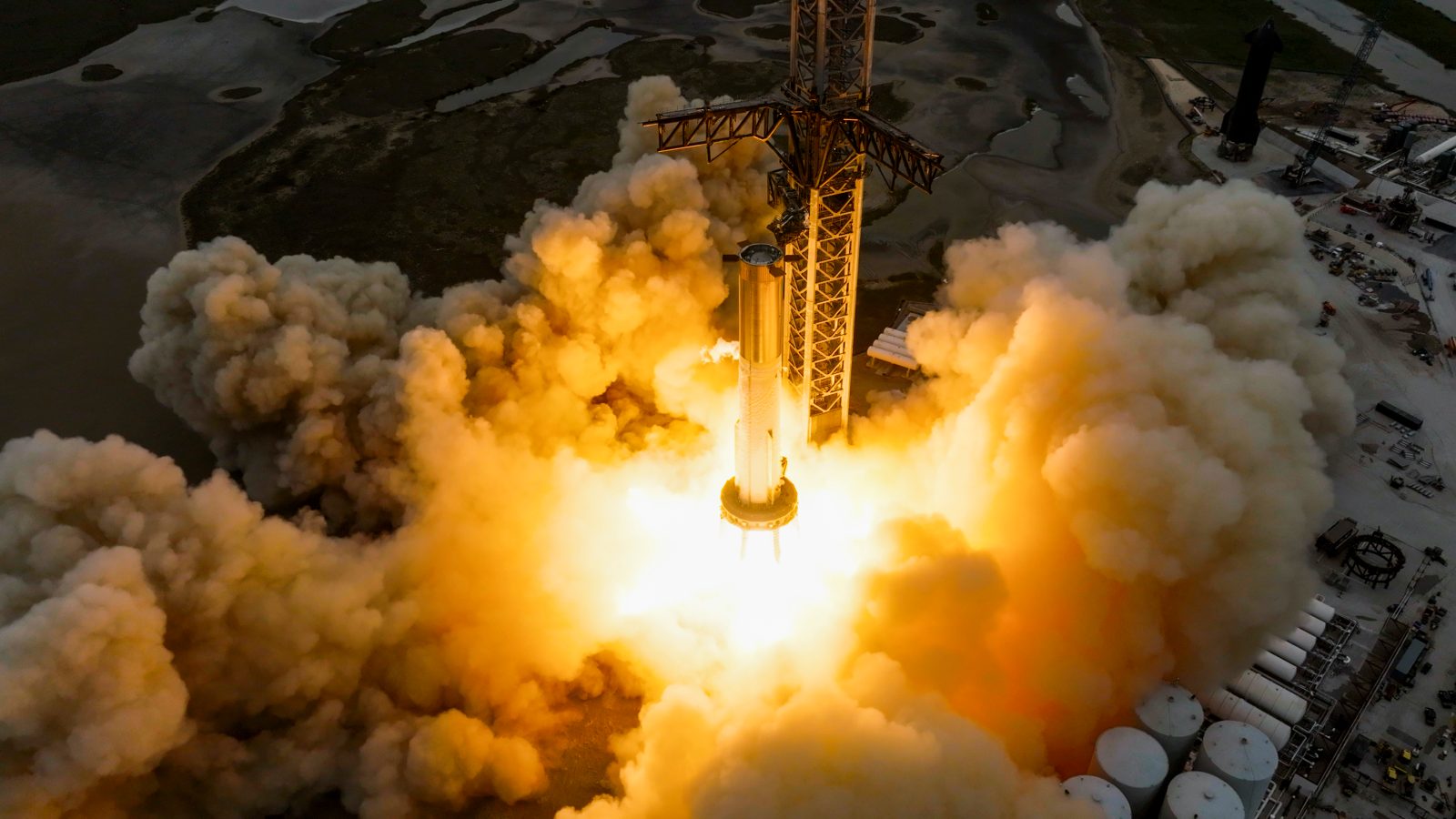
After over three years of development in South Texas, SpaceX finally reached its final milestone before launching a complete Starship rocket to orbit, the 33-engine static fire. While only 31 Raptor engines successfully ignited, this is still a major milestone for the company as it hopes to start flying this rocket to finally gain an ROI on its investment.
Partial successful static fire is still a ‘W’ for SpaceX
After completing a full wet dress rehearsal two weeks ago, SpaceX was able to complete work towards a static fire of the Super Heavy booster (the Starship rocket’s first stage) Thursday afternoon. The goal was to test a static fire of all 33 engines installed on the booster, Booster 7. This would be the largest number of engines ever ignited at one time, beating the Russian N1 Moon rocket with 30.
That still came true, even though Elon Musk stated the total number of engines test-fired Thursday was 31, that still marks a record. The cause for not having the full 33 engines was due to one engine being turned off prior to the test and another aborted on its own before ignition.
It isn’t known how these shutdown engines will affect Starship’s launch plans, you could both easily believe SpaceX to reattempt the static fire or move forward with the launch.
Beating the historic Saturn V rocket
The total thrust stated by SpaceX outputted by the 31 engines Thursday was 7.9 million foot-pounds of thrust. That number barely puts Starship over NASA’s Saturn V rocket (7.75 million lbf) which launched the first crews to the Moon in the 1960s and 70s.
On SpaceX’s website, the company states the Starship Super Heavy booster will be able to output 17 million lbf. That amount of thrust will give it a solid lead for the most powerful rocket, passing the Space Launch System, which launched only a few months ago.
Next step: Starship orbital launch attempt
Disregarding any possible need to redo tests, the next step forward for SpaceX is launching the full stack to orbit. Something we have been waiting on for quite some time now. The last plan we’ve seen for Starship’s orbital launch attempt would have it make just shy of one orbit, splashing down off the coast of Hawaii. This will test the entire system in the real world, including the heat shield, by far the biggest question mark in form of reliability for the rocket.
Before SpaceX can launch Starship, the company must first obtain a launch license from the FAA, and unless you have a crystal ball, no one can predict how well that will go. SpaceX gained approval to launch Starship out of Starbase last year after a long environmental review process.
Eventually, SpaceX gained a mitigated FONSI (finding of no significant impact), meaning they could launch, but changes would have to be made. It’s unsure what all needs to be changed and if SpaceX has made those changes yet. However, both Elon Musk and company President and COO Gwynne Shotwell have stated launch is expected in the next month or so.
FTC: We use income earning auto affiliate links. More.


Comments